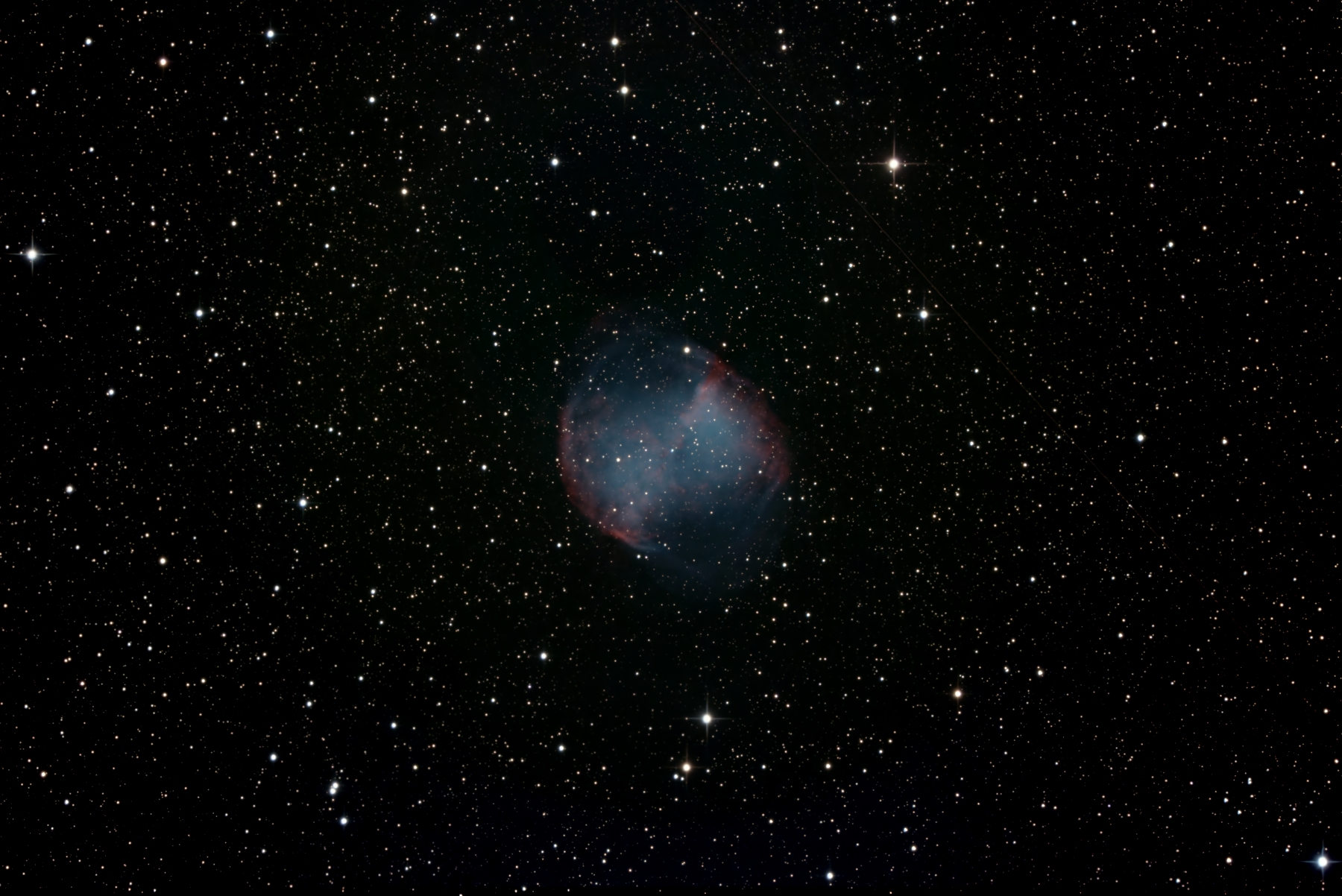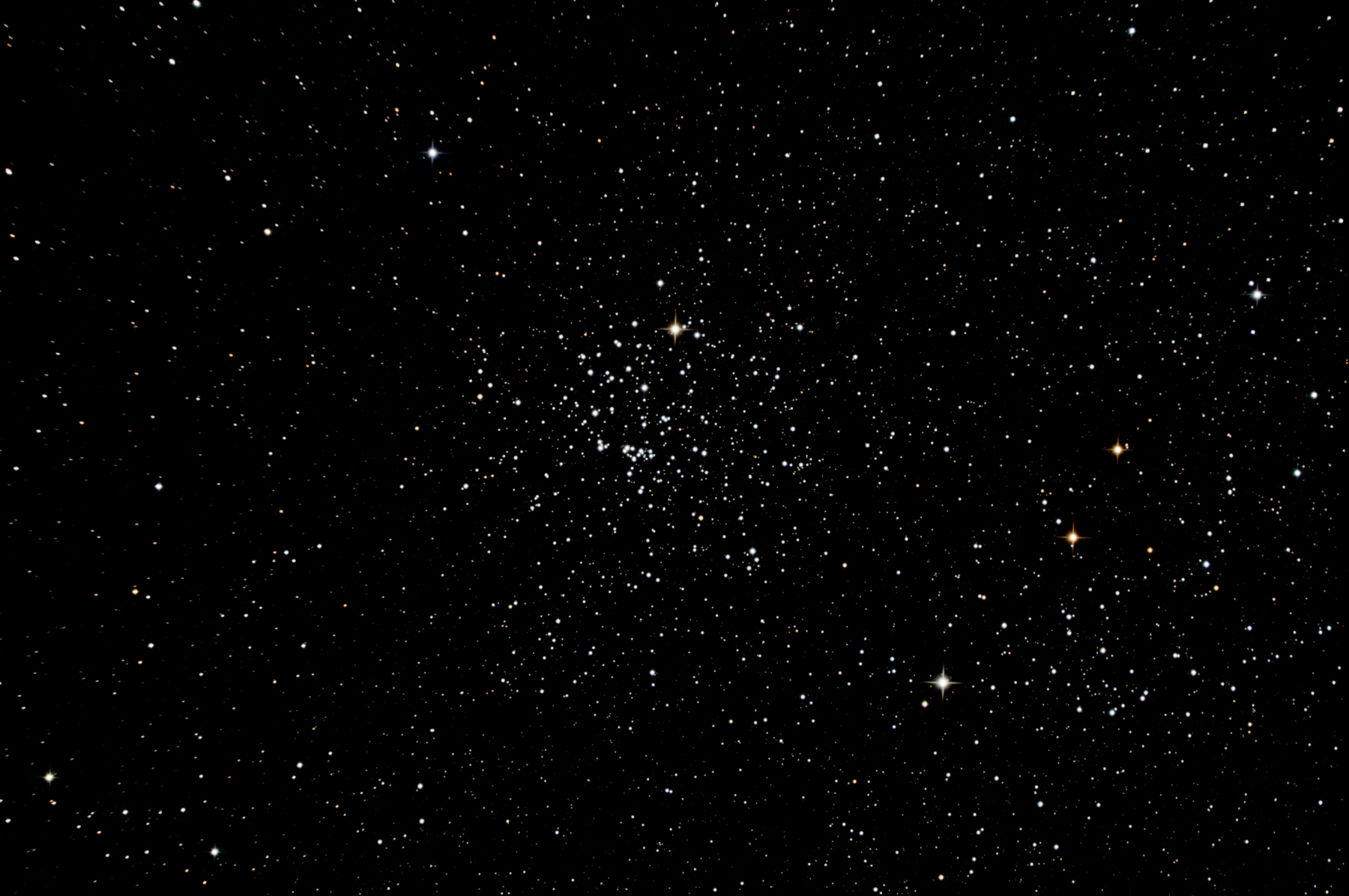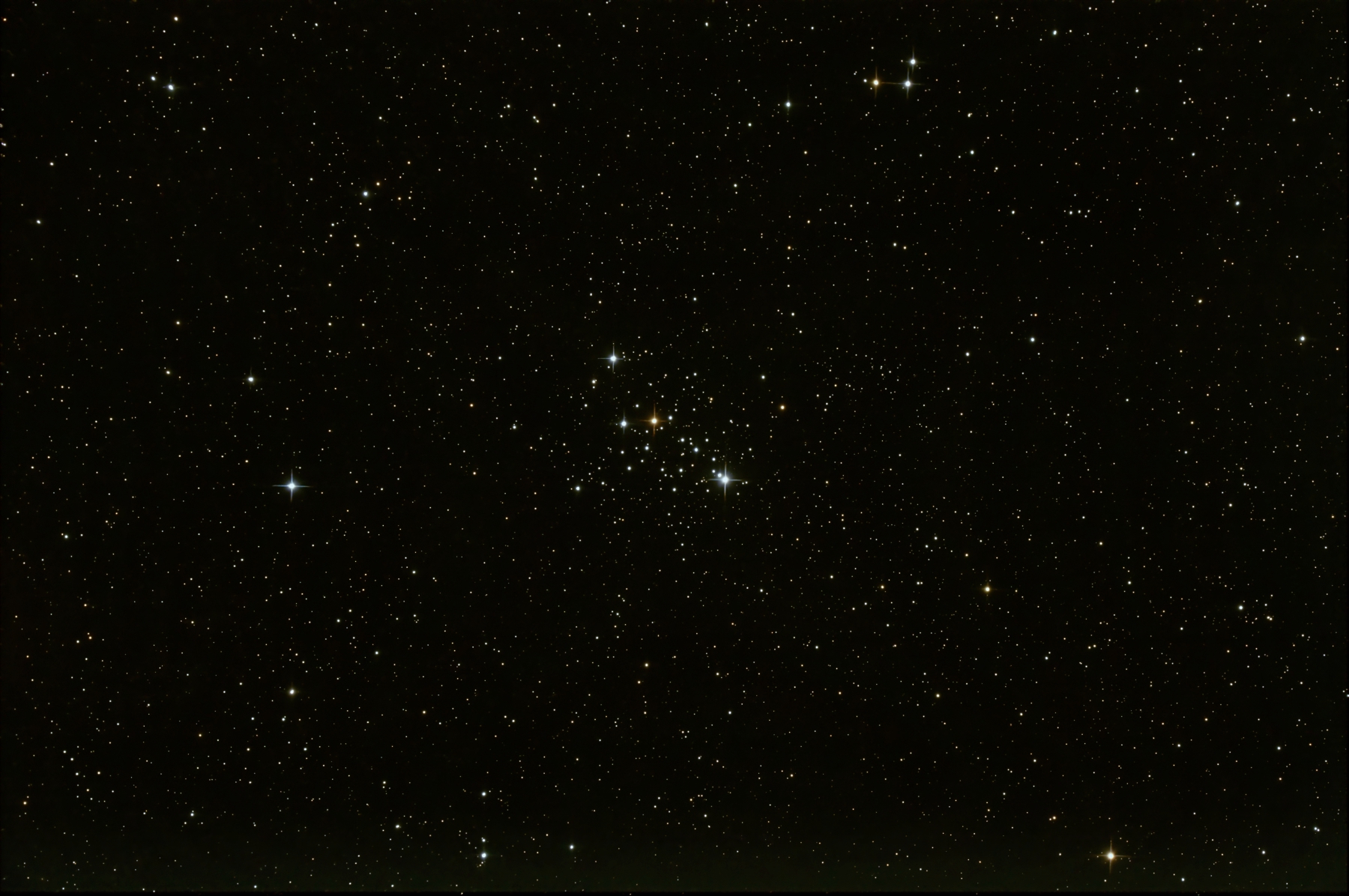
Image Information:
M27, also known as the "Dumbbell Nebula", is the remnant of an exploded star. The explosion happened about 10,000 years ago The nebula lies 1360 light-years from Earth and is roughly 1 light-year diameter in actual physical size. The nebula is receding from Earth at a rate of approximately 42 km/second.
8 second livestream exposures x 450 total sub-frames for total exposure time of 60 minutes
 Image
Information:
Image
Information:M31 is "The Great Andromeda Galaxy". It is a spiral galaxy 2.6 million light-years from Earth. The galaxy is 220,000 light-years in diameter, about double the diameter of our own Milky Way Galaxy. This image shows the central nucleus of the galaxy but it actually extends outward to a much wider field of view than this frame and its limited exposure time shows.
8 second livestream exposures x 150 total sub-frames for total exposure time of 20 minutes

Image Information:
M32 is an elliptical companion galaxy to M31 (seen in image above). M32 is gravitationally bound to M31, so it lies at roughly the same distance from Earth of 2.6 million light-years. M32 is very small in relation to M31 at a diameter of only 6,500 light-years. The extreme edge of the M31 galaxy can be seen at the far left of this frame.
8 second livestream exposures x 150 total sub-frames for total exposure time of 20 minutes

Image Information:
M110, like M32, is a companion galaxy gravitationally bound to the Great Andromeda Galaxy seen above. Notable in this frame are a couple of dark splotches that are gigantic gas and dust clouds near the nucleus of the galaxy. M110 is approximately double the size of M32 at about 12,000 light years in diameter. M110 also contains a large halo of globular clusters visible in very large telescopes.
5 & 8 second livestream exposures x 390 total sub-frames for total exposure time of 40 minutes
 Image
Information:
Image
Information:M34 is an open cluster in our Milky Way Galaxy. It is located about 1400 light-years from Earth. The cluster has a diameter of approximately 15 light-years. It is notable for its very hot, young blue stars, several of which are optical double stars from Earth's line of sight. Many of the background stars farther out from the cluster's center are also members of this large bright cluster.
5 second livestream exposures x 240 total sub-frames for total exposure time of 20 minutes

Image Information:
M52 is a very dense open cluster packed full of about 200 stars. It lies at a distance from Earth of approximately 5000 light-years. M52 has a diameter of 15 light-years. Its predominant star members are yellow giants similar to our Sun, as well as several younger blue-white very hot stars. It is nearly stationary in angular velocity with the Earth inside our Milky Way Galaxy.
5 second livestream exposures x 240 total sub-frames for total exposure time of 20 minutes

Image Information:
Messier 103 is a compact open cluster in our Milky Way galaxy. It lies at a distance from Earth of approximately 9200 light-years and has a diameter of 15 light-years. It is populated by about 172 stars, many of which are about 25 million years old. It has a notable large, bright red-giant star near its center and a physically-bound double star is also visible in the upper right of the frame.
5 second livestream exposures x 84 total sub-frames for total exposure time of 7 minutes

Image Information:
NGC457 is an open cluster in our Milky Way galaxy that contains about 100 stars. It lies at a distance from Earth of 7900 light-years and has a physical diameter of about 15 light-years. It is also known as the "ET Cluster" due to it's two very bright stars that look like a pair of eyes staring back at you. The brightest stars is a foreground star and not physically bound to the cluster.
5 second livestream exposures x 120 total sub-frames for total exposure time of 10 minutes

Image Information:
NGC884 is a beautiful, bright open cluster in our galaxy that is comprised of many hot, young blue-giant stars, It contains about 150 stars and lies at a distance from Earth of 7000 light-years. The cluster is approximately 3.2 million years old which is very young by galactic standards for objects of this type and mass.
5 second livestream exposures x 240 total sub-frames for total exposure time of 20 minutes

Image Information:
NGC 869 is the other half of the famous "Double-Cluster" in the constellation Perseus. This cluster is only a few hundred light years distant from NGC884 (see image to left) and also is at a distance of approximately 7000 light-years from Earth. It appears to be significantly older than NGC884, despite their relatively close spacing together in our galaxy.
5 second livestream exposures x 240 total sub-frames for total exposure time of 20 minutes

Image Information:
NGC663 is an open cluster in our Milky Way galaxy. It is approximately 20 million years old. It is approximately 7000 light years distant from Earth. It contains at two bright Red Supergiants (upper right of cluster). The cluster is receding away from Earth at approximately 32km/second. It is thought to be part of a larger group of adjacent clusters that are all gravitationally bound.
5 second livestream exposures x 118 total sub-frames for total exposure time of 9.8 minutes

Image Information:
NGC6826 is a planetary nebula in our Milky Way galaxy. Like most planetary nebulae, it is gas shell remnant of a violent exploding, then collapsing star that has expended all its fuel and has reached the end of its life cycle. It lies at a distance of 4200 light-years from earth and is known as the "Blinking Eye" nebula.
5 second livestream exposures x 240 total sub-frames for total exposure time of 20 minutes

Image Information:
NGC6946 is a spiral galaxy located at a distance from Earth of 10 million light-years. It is known as the "Fireworks Galaxy" due to its pinwheel appearance and brightness of its spiral arms. It's physical diameter is 40,000 light-years, less than half the size of our own Milky Way galaxy. This galaxy is undergoing an unusually high amount of new-star formation in its spiral arms.
8 second livestream exposures x 225 total sub-frames for total exposure time of 30 minutes
 Image
Information:
Image
Information:NGC7293, also known as the "Helix Nebula" is another exploded-star planetary nebula gas shell. It is known for its excellent color from hot, ionized gas and dust that originated from the star explosion approximately 10,600 years ago. It lies at a distance from Earth of 650 light-years and has a physical diameter of approximately 2.5 light years.
5 second livestream exposures x 240 total sub-frames for total exposure time of 20 minutes
 Image
Information:
Image
Information:M33 is a spiral galaxy commonly known as the Triangulum Galaxy. It is a member of the Local Group of galaxies along with our own Milky Way galaxy and the Great Andromeda Galaxy, It lies at a distance from Earth of 2.9 million light-years. M33 has a physical diameter of 50,000 light-years, or about half the size of our own galaxy.
8 second livestream exposures x 342 total sub-frames for total exposure time of 45.6 minutes
 Image
Information:
Image
Information:NGC 7331 is a spiral galaxy with an associated cluster of smaller fainter elliptical galaxies and one spiral galaxy just visible below the main galaxy. It lies at a large distance from Earth of 49 million light-years and has a physical diameter of 30,000 light years, or less than a third the diameter of our own Milky Way galaxy. View full size by clicking the image for best views of these objects.
8 second livestream exposures x 450 total sub-frames for total exposure time of 60 minutes
 Image
Information:
Image
Information:NGC7662, also known as the "Blue Snowball" nebula, is a planetary nebula in our Milky Way galaxy. It lies at a distance from Earth of 4500 light-years. It has a physical diameter of approximately 0.5 light-years. It has a distinctive blue-green appearance in larger telescopes. Click on image to see more details in the object's structure.
5 second livestream exposures x 240 total sub-frames for total exposure time of 20 minutes
 Image
Information:
Image
Information:NGC7789, also known as "Caroline's Rose", is a beautiful large and very dense open star cluster in our Milky Way galaxy. It lies at a distance from Earth of 8000 light-years, and has a diameter of about 60 light-years. The cluster is estimated to be 1.6 billion years old which is unusually old for an open star cluster and compares similarly to much older globular clusters in our galaxy.
5 second livestream exposures x 240 total sub-frames for total exposure time of 20 minutes